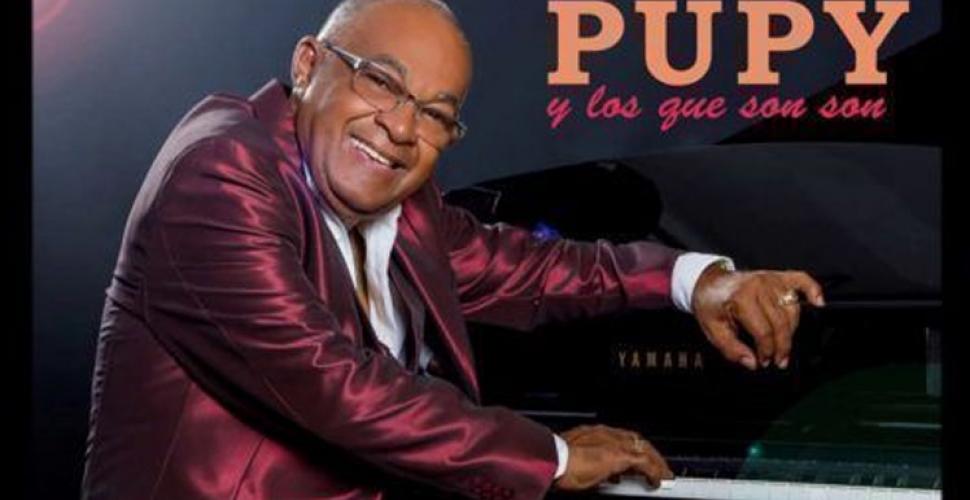Menu
Close
Pupy Y Los Que Son Son

Cosmopolite Scene
fredag 6. mars 2009
Dørene åpner 21:00
Scene
Cosmopolite
Billettpris
250/200,- +avg
Aldersgrense
18 år med gyldig ID
Seter
Unummerert
Pupy Y Los Que Son Son
En av Kubas store pianister som ble berømt med Orquesta Revé, og senere som en av hovedfigurene og komponistene i Los Van Van. Denne gangen er han på turne med sitt eget 12 mans band. Dette blir kubansk stemning og musikk på sitt beste.
Dj Mojito spiller før og etter konserten.
- Cesar de Las Mercedes Pedroso Fernandez - piano, band leder
- Uyuni Martinez Romero - trompet
- Ariel Guillot Manzano - trombone
- Sergio Ricardo Luna Longchamp - trombone
- Roelvis Reyes Simono - trommer
- Miguel Enrique Escuriola Espinela - timbaler
- Julio Alberto Norona Perez - guiro
- Duniesky Barreto Pozo - congas
- Osiris Martinez Rodriguez - tangenter
- Daymar Daniel Calvario Guerra - bass
- Michael Esteban Perez Sotolongo - vokal
- Norberto Gomez Guilbeaux - vokal
- Isidoro Durand Perez - vokal
www.youtube.com/watch?v=hZNqmCBUz_8
www.pupylosquesonson.cult.cu/index.htm
The musical quality of César (Pupy) Pedroso is more that demonstrated. It's a reason for his permanence in two of the most important Cuban dance bands: he's one of key founding members of Elio Revé's Charangón and Los Van Van. César "Pupy" Pedroso is one of the key figures not only in Timba, but in the last 30 years of Cuban pop music. As well as being one Cuba's best and most prolific composers, he played a seminal role in revolutionizing the art of salsa piano playing.
Pupy has written more 150 hits than anyone but Formell, has three solo albums to his credit and has also written hits for other bands, including Manolito y su Trabuco and and NG La Banda. The most famous songs are: Seis Semnans, El Nuenagente, Azucar, Será que se acabo, Eso está bueno, El negro está cocinando, Temba, Tumba, Timba, La voluminosa , Mamit portame bien, Que cosas tiene la vita, El Pregonero, Ni Bonbones ni Caramelos and La Bomba Soy Yo. Permiso llegó Los Van Van together with a constellation of singers from Los Van Van deserving Latin Grammy Award. This Cd included: Temba, Tumba, Timba, El negro está cocinando and La bomba soy yo.
At the last two years Pupy had a predominant role in many important records like: Fruta Proibita in 1995 togheter with musicians coming from the most important Cuban Group, like Omara Portuondo, Caridad Cuervo, Xiomara Laugard, Raul Planas, Rolo Martinez, Isaac Delgado, Angel Bonne, Mayto Rivera, Pedrito Calvo and Rojitas.
The second album it was a second version of the former with Eduardo Tiburon Morales, Angel Bonne, Pío Leiva, Raul Planas and Jorge Leliebre.
In 1997 he recorded Lo mejor de Cesar Pedroso, De la Timba a Pogolotti and Los que Son Son.
In 2001 Pupy realesed Timba: The New Generation of Latin Music, which has six songs in common with the new one. It was recorded before Pupy left Van Van - before he had his own working band - and as such it had the feeling of a project - as if they said ok, let´s see what happens with this combination of famous musicians from other groups. It was a great album, with the same creative energy and with great playing. The first album, remember, had an all-star lineup including Changuito, Candelita Avila, Boris Luna, El Indio, Gerardo Miró, Basilio Marquez, Donaldo Flores, Maraca, Jorge Raglan, Pedro Fajardo and many others.
César Pupy Pedroso left Los Van Van in the summer of 2001 to form his own band, Los Que Son Son. Joining him was violinist Gerardo Miró. Pupy is now fully-motivated to take his project to the moon. He now has one of the hottest acts in Havana and the full support and respect of both the public and the other musicians. Through small details, Pupy has created a new sound and a new concept which is quite different from Los Van Van. Of more critical importance to the history of Timba were Pedroso's innovations in piano playing. One of the key differences between Timba and earlier salsa is the use of creative piano and bass parts designed for a specific song, rather than formulaic rhythm patterns. In many cases, such as ¿Qué Tiene Van Van?, the piano part becomes the hook by which the song is remembered. Without getting into too much detail, Pupy was among the first to use contrary motion and independent rhythms between the left and right hands, displaced syncopations, and African rhythm influences from batá and guaguancó.


